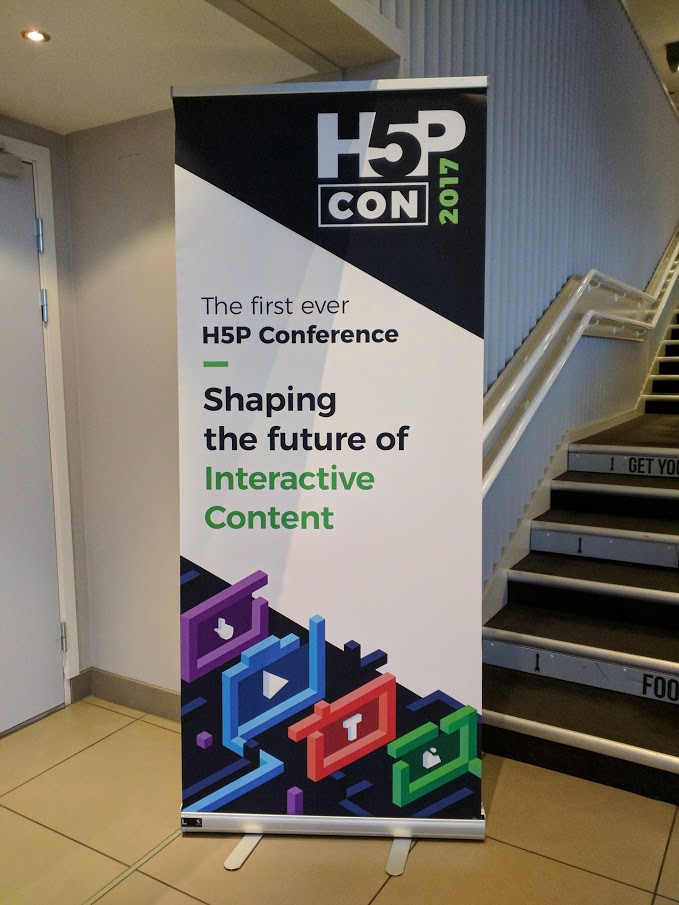Creating digital learning materials is hard. Most websites are too complex, not user friendly or simply don’t fit the needs of teachers and students. On the 11th of September 2017 a small group of ed-tech enthusiasts gathered on the island of Tromsø (Norway) to celebrate and work on a digital tool that just works: H5P.
There is a web-application or mobile app for every possible task or exercise. That is why we created the Dutch website ‘onderwijstools’: to collect these tools so teachers don’t have to search the vast amount of apps available.
H5P (HTML5 Packages) bundles over 30 content types. The interface is user friendly and you don’t have to know code to create interactive content for your online course or website.
During the very first H5P conference, educational staff and developers had the chance to learn more about interactive elements and contributde to some content types and translations as well.
The opportunities of interactive content in education
In learning materials, such as digital or paper syllabi, embedded support devices (ESD) are necessary to guide students in their learning journey. Testing ESD flourishes on digital platforms. Students get immediate feedback and teachers can follow the progress with the use of learning analytics. Teachers can even encourage their students by using adaptive learning paths or give them content based on their learning style.
Read more about ESD’s on ‘Effective Study Materials’ .
Digital and interactive learning content opens up course materials to all students. People with accessibility challenges such as motor control, auditory or visual limitations can benefit greatly from tools such as H5P. Do you know how hard it is to turn a page when you have motor impairments? Online tools are often obligated to make their work accessible for everyone, no matter the needs one has. At this moment, for example, most H5P content types can be created and used with the help of online read-speakers.
Example session: super fast content creation
We joined a lot of interesting sessions during our time in Tromsø: using accessibility features, a hackathlon, voting sessions and exploring the vision and roadmap of H5P, … just to name a few.
In one session we learned how to create interactive content with the speed of light. Some H5P content types have a hidden textual editor. Here you can use asterisks and colons to quickly add variables and tips (a little bit like using Markdown language). The textual inputs can be transferred to other content types. For example: a simple drag and drop exercise can be transformed into a ‘fill in the gaps’ exercise. This way you can differentiate your learning materials very quickly.
The past and future of H5P
The Norwegian government invests in their educational system to great extend. During the conference, we could and experience this ourselves. Some of the sessions were held in the ‘Room for Learning’, a room designed for learning activities and stuffed with technological gadgets. The room is completely modular and can be used by all educational instances in Tromsø. The Norwegian government developed the ‘NDLA’ (Digitale læremiddel for vidaregåande opplæring), a platform with open educational resources for secondary schools. In need of digital content creation tools, the company Joubel started H5P with government support and external funding (of which many from educational institutions).

H5P’s roadmap is very exciting for teachers and supporting staff. A central hub with public content will be available for all creators interested in using open educational resources. Anyone will be able to make their content publicly available or use and adapt material from others. Sharing learning materials will open up time for teachers to spend more time on teaching and guiding students in stead of spending hours creating content that already exists.
The community behind H5P is growing rapidly. Higher education in most of the western world and K12 are the most popular users in the community. America has a bigger audience than Europe at this time (51% to 38%). The user count will grow even more when the LTI-complient version of H5P will be available. Content types will integrate in for example Brightspace, Canvas, Moodle and Blackboard and connect deeper with different learning analytics platforms. A new content type is planned to connect all other types in an adaptive learning path / branching scenario.
We have a bright future ahead of us. And this is just the beginning.
Check out Oliver Tacke’s channel to see some of the keynotes.
